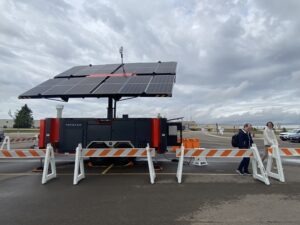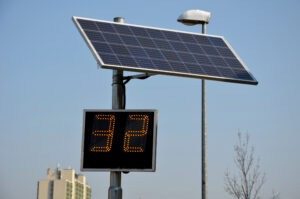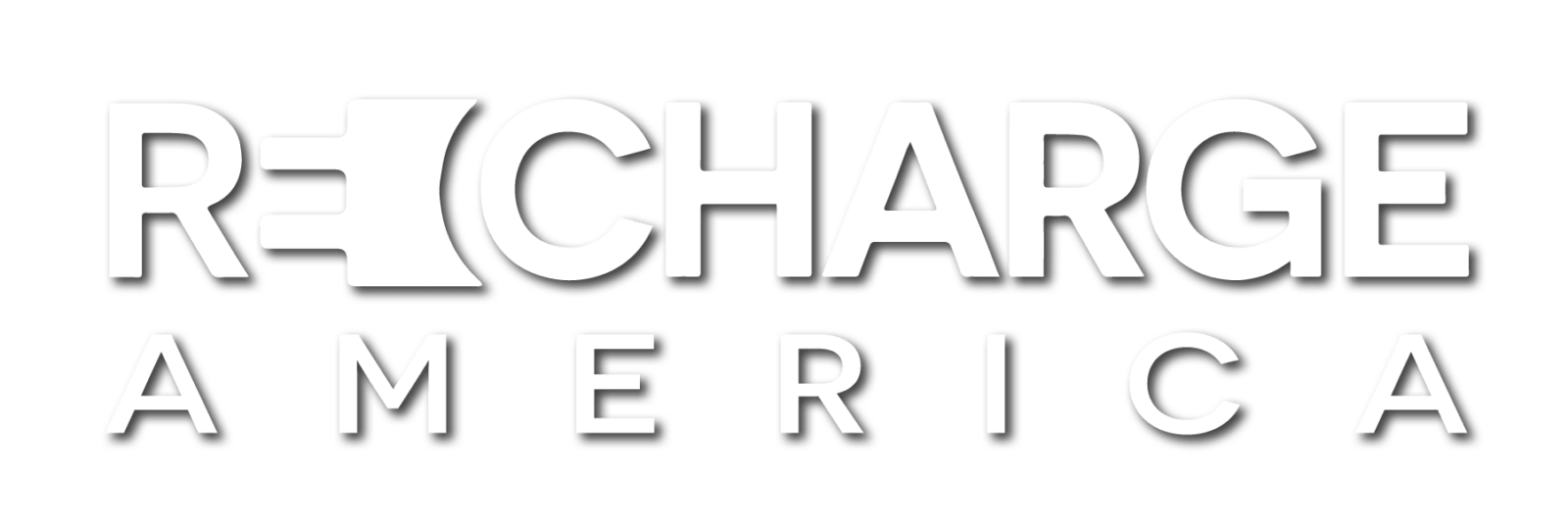We do a lot of work with EVs with Recharge America, but the world of electrification keeps expanding all the time. We’re doing a series of blog posts to explore some of the non-car ways that electrified equipment can be incorporated into your daily life. The next in this series is below: solar-powered microgrids. See the others if you missed any: lawn care equipment
When we talk about solar power, we’re often referring to either a single home being powered by their own rooftop panels or a large array that’s generating large amounts of electricity to transmit back into the overall electrical grid. However, increasingly, solar power is being deployed in a range of less-common contexts in innovative ways.
You may have seen, for example, solar-powered trash compactors in a downtown area or solar-powered traffic and information signs along a highway.
 One of our most recent events in Faribault, MN, was hosted at Trystar, a manufacturer of electrical distribution and storage components. They recently expanded their facility, and in doing so, they incorporated a large solar array on the roof that allows them to operate their own microgrid. Watch their video below that shows time-lapse of the construction and result. Their microgrid provides nearly all of their primary power needs for the whole facility. At left you can see a mobile solar-powered generator, which they’ve developed as a product offering. Trystar is not only taking responsibility for their own power needs but also providing solutions for others’ power challenges. But let’s back up a step and talk about microgrids for a moment.
One of our most recent events in Faribault, MN, was hosted at Trystar, a manufacturer of electrical distribution and storage components. They recently expanded their facility, and in doing so, they incorporated a large solar array on the roof that allows them to operate their own microgrid. Watch their video below that shows time-lapse of the construction and result. Their microgrid provides nearly all of their primary power needs for the whole facility. At left you can see a mobile solar-powered generator, which they’ve developed as a product offering. Trystar is not only taking responsibility for their own power needs but also providing solutions for others’ power challenges. But let’s back up a step and talk about microgrids for a moment.
A microgrid refers to power that can be generated and consumed within a closed circuit and operate independently of the larger electrical grid. For example, traffic signs attached to a solar panel would be a very small example of a microgrid: the panel

generates all the energy the sign needs, which eliminates the need for cables or electricity delivery to the sign’s location. Trystar’s microgrid, however, operates at a much larger scale, powering much of their primary energy usage. What’s particularly promising about combining microgrids with solar panels is the ability to take a building or even a whole block of buildings off the electrical grid altogether as needed. PLACE, a nonprofit community developer, envisions incorporating anaerobic food waste with solar panels to power their entire live/work communities. In places where the electrical grid can’t keep up with demand — like when there’s extreme heat in California or extreme cold in Texas — the ability to take load off the power grid not only benefits the consumers who are able to disconnect and rely only on their microgrids for power but also benefits average utility consumers who are dependent on the grid by reducing the overall demand. These kinds of innovations inspire us at Recharge America, and we’re excited and proud to work with partners like Trystar who are leading the way!

